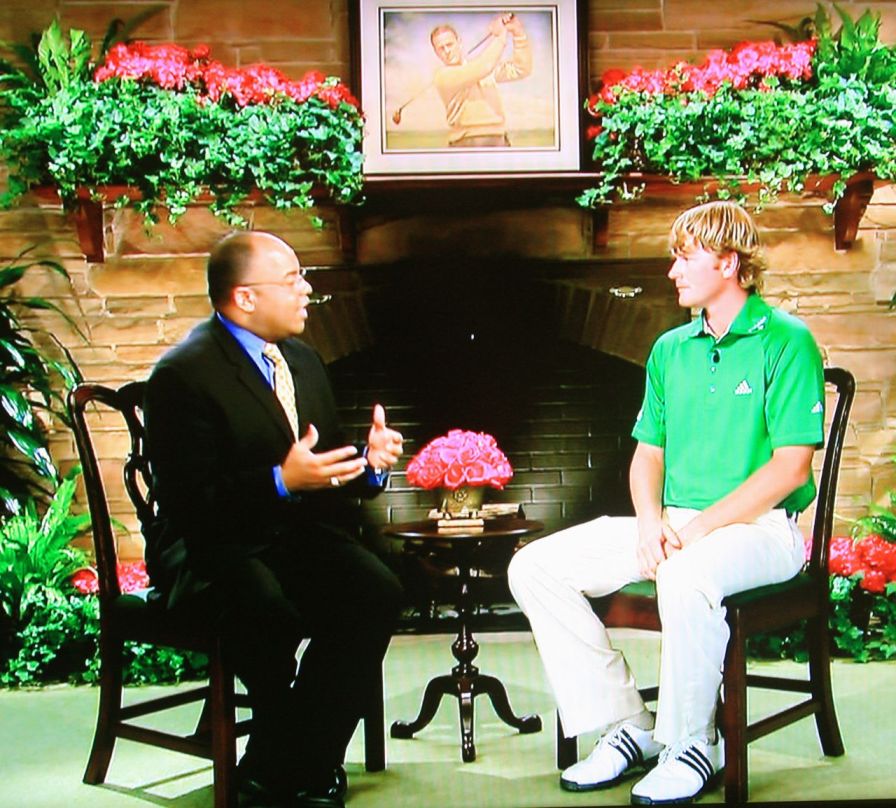Clifford Roberts called. He wants his Par 3 Contest back.
Now, I love the Par 3, and some of you may know my first design was a par 3 course. I believe they are vital to the health of the game and I'm most content playing a fun pitch and putt. Furthermore, good players can get so much better on a par-3. They are great places for kids to learn and an ideal setting for a quick round if you don't have the time. I truly admire Billy Payne's vision of wanting to show people that, wait, his words:
We are televising the Par 3 event this afternoon for the first time, hoping kids will be inspired by seeing golf competed and conducted in a fun and family manner.
And who knows, maybe it will send a message across the world that golf can be played and immensely enjoyed on only a 1,000-yard course needing just four- or five-clubs and taking less than two hours to complete.
However, today's Par 3 Contest, the first ever televised by ESPN no less, turned into a complete disaster. Not only did it run so long that ESPN had to abandon Pardon The Interruption (take that, irony!), but the last two groups played in together because play was so slow.
After an hour of the telecast the entire exercise had grown exceedingly painful thanks to the mess that this once semi-legitimate competition has become. Kids were all over the place. Stepping on holes, having to have their hands held to prevent running into the lakes, etc... Even caddies and wives were hitting putts or shots by the end of the competition. Putts rolling to the cup on No. 9 early in the day saw a nice smooth surface. By day's end the ball was wobbling through Croc marks and countless other dents.
As a viewer all I could think was, every grown man who has discouraged kids from being able to use his country club course is sitting there saying, "see, this is why we have to keep the kids outta here. Them and their doting parents will make a mess of the place."
There is a time and place for this kind of mess, but the Masters Par 3 Contest on national television was not the one. Assuming any kid was watching (hopefully they in school), I can't imagine they would have wanted to take up golf after sitting through the Par 3. Late in the day, one of the kids caddying for dad could be seen sitting on the 8th tee, his face buried in his hands out of sheer boredom. And he didn't even have to listen to Andy North and Peter Kostis conducting interviews!
Though Kostis did at least remind us (twice) who is to blame for starting this mess: Jeff Maggert. He started the tradition of bringing the little ones along and dressing them up in caddy jump suits. But it's the club's fault for letting this spiral into a disaster that ensures Tiger Woods will never play in it as long as he is a serious competitor, and even when he's bald and over the hill I suspect he's not coming back.
It is even hard to see ESPN wanting to televise this again unless the club puts an age limit and a time limit on the groups. Not like they have a choice, but you have to think the boys in Bristol were agonizing today when the affair ran nearly an hour long.
The last Par 3 Contest I witnessed was in 2003. Tiger Woods played and it was great fun to see the variety of old guys, new players and other major winners whizzing around that pretty little layout. Some of their offspring caddied and every once in a while they'd let the rug-rat hit a shot.
Somehow in five years it has become PGA Tour daycare's graduation ceremony. A cotillion, bar mitzvah and ridiculous coming out party rolled up into one, with eligibility for every child under 10 holding some genetic tie to a contestant.
This is not what Clifford Roberts envisioned when he started the Par 3 Contest. It's most definitely not what he envisioned when he left that big pile of money to Planned Parenthood. And it's not what anyone would envision as a way to grow the game.

















